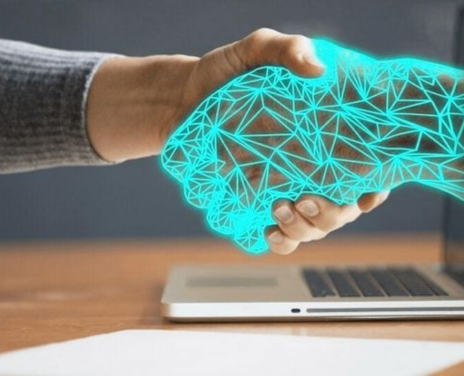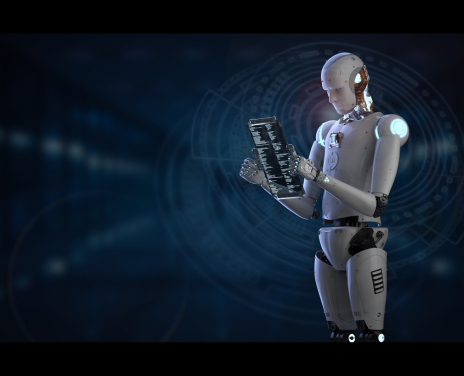The workforce evolves dramatically because of artificial intelligence (AI) and automated innovations. These technological advances are transforming work activities together with essential workplace abilities as well as the fundamental aspects of labor. During AI advancements both businesses and workers find the chance to adjust for closer human-machine collaboration in novel working relationships. Aixcircle stands for embracing workforce technology changes to create an industry which combines artificial intelligence and human capability rather than ignoring their compatibility. The blog investigates the workforce transformations brought by AI and automation technologies and discusses essential business preparation for upcoming workplace changes.
AI and Automation: The Drivers of Change
Industries undergo transformation through AI together with automation technologies which supply businesses with ways to optimize operations thus cutting costs along with improving operational efficiency. Through automation employees can allocate their time to handle sophisticated tasks and creative initiatives and strategic projects. Chatbots operated by artificial intelligence systems handle common customer inquiries while human representatives attend to more complicated situations in service-based industries. The implementation of automated systems within manufacturing environments leads to better quality production while delivering more efficient output times. AI applications across healthcare and finance sectors perform advanced data analysis tasks that enable predictive diagnostics and risk management to help businesses develop better data-based strategic choices.
AI technology together with automation devices transform work environments at their core while bringing additional benefits for performance enhancement. These advances step up the pace for businesses to redesign their operational models and resource strategies while maximizing company-wide productivity.
The Future Workforce: New Roles and Skills
As automation through artificial intelligence systems absorbs basic operational tasks organizations now need employees to direct these systems along with maintaining human-machine teamwork. AI does not eliminate employment but it transforms the types of positions employers will seek. Many roles with expertise in artificial intelligence together with machine learning and data science and additional technology-driven skills will experience rising demand in the future workforce. Technical skills on their own do not satisfy the current labor market requirements. The ability to display traits such as creativity alongside problem-solving abilities and emotional intelligence will grow especially significant when workers interact with AI systems and technology.
The future will see an increasing prevalence of roles which merge technical capabilities with human-centered competencies. The fusion of AI engineers with business analysts and marketers to optimize customer experiences will create growing opportunities in the marketplace. Businesses need to dedicate funds into employee development to provide essential skills needed by their teams when working in the AI-dominated reality.
The Impact on Job Displacement and Creation
AI and automation fear creates significant concern because they will displace many jobs from human workforces. History shows robots and AI systems affect a few select roles mostly through automation but simultaneously generate new occupational opportunities. The Internet enabled the creation of three new industrial sectors: e-commerce together with digital marketing and application development. AI and automation technologies generate several unknown advanced positions across various fields of work.
Areterious consequences of job displacement can be addressed through workforce training programs directed by public and private sectors. Organizations need to supply employees with training for new technologies because this ensures workers remain prepared for upcoming workforce changes. The goal is to combine AI and automation with human talent so workers can achieve maximum potential while machines perform automated tasks.
Remote Work and AI-Powered Collaboration
AI technology enables organizations to use flexible work arrangements that let people work from anywhere for the modern workforce. Since the pandemic accelerated the adoption of remote work teams learned how AI-powered collaboration platforms help them maintain both connection and productivity through distance. Cloud-based platforms alongside video conference features and AI-powered project management tools supply teams with tools to manage tasks from anywhere they’re located.
Businesses adopting remote work strategies obtain a share of world talent enabling them to draw professionals across professions and countries. Artificial Intelligence serves as an essential tool to optimize remote work because it enhances both standard task automation and collaborative communication and task monitoring. The coming workplace reality will depend on both workplace locations and employee AI interaction systems which drive enhanced performance levels.
Preparing for the Future: How Businesses Can Adapt
Businesses who intend to remain competitive in the future workforce need to use AI and automation tools that provide advantages to both employers and their workforce. Here are a few key strategies businesses can adopt:
- Invest in Employee Training: The organization needs to create continuous development programs which instruct technical abilities along with communication strategies. The training programs will prepare staff members to transition into new technological roles while enabling them to work alongside AI platforms successfully.
- Foster a Culture of Innovation: Let your employees be creative and solve problems by providing them freedom to test new technologies along with discovering advanced AI applications that improve their daily tasks
- Embrace Hybrid Work Models: Employee productivity will continue to receive investment through advanced tools which support efficient work without physical boundaries of workplace location.
- Leverage AI for Efficiency: Modern decision systems together with workflow enhancements and improved customer satisfaction results from the adoption of AI technology. Businesses leverage intelligent tools for data analytics to generate decisions that drive operational efficiency.
Conclusion- Promising AI Future
The transformation of the workforce is due to the quick progress made by AI & Automation, however hard it may look at first but soon will provide us the opportunities. Over time, the tech will continue to improve and these businesses of all kinds need to learn to use it- such technologies enable us to increase productivity, innovation, and collaboration. Investing in employee development, cultivating an innovation culture and getting ready for the future can help organisations succeed in this new age of work; aided by AI, where they work together to get better results.


